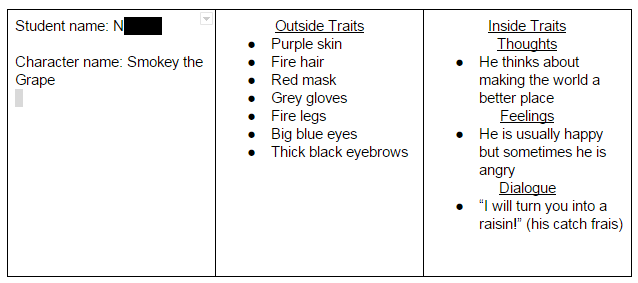To get a better understanding of our plan, check out the Part 1 blog post.
Here are some examples of how the intersection between curriculum, technology, and creativity have come together:
Snowy the Easter Bunny
Blossom
Shimer
Smokey the Grape
Johnny and Egg Boy
Shimer
Smokey the Grape
Johnny and Egg Boy
I'm especially proud of the following piece of writing and 3D artifact. It was created and written by a new student in my class. He arrived two weeks ago from the Middle East. He doesn't speak a lot of English but was intrigued by the 3D printer and what the other students were doing. He learned how to use Tinkercad and came up with a cool idea about what he wanted to share with us. He created 'King Boy' and with the help of a few students, wrote a story. On top of being dropped into a foreign culture and immersed in a language he doesn't know, he has taken some big risks. This assignment has provided him with a way to connect with the other students.
After the students finish up their writing they want to formally present their work and then display their writing and artifacts for others to see. Its been and exciting process so far and look forward to what we do next.
I would love to hear your thoughts about the work we have done. Please feel free to leave a comment!
I would love to hear your thoughts about the work we have done. Please feel free to leave a comment!



























